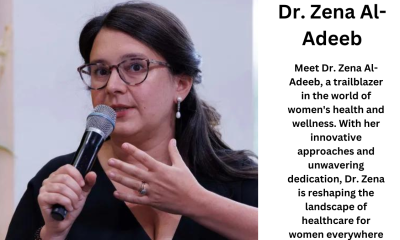Fashion
Understanding, Preventing, and Treating Milialar for Clearer Skin
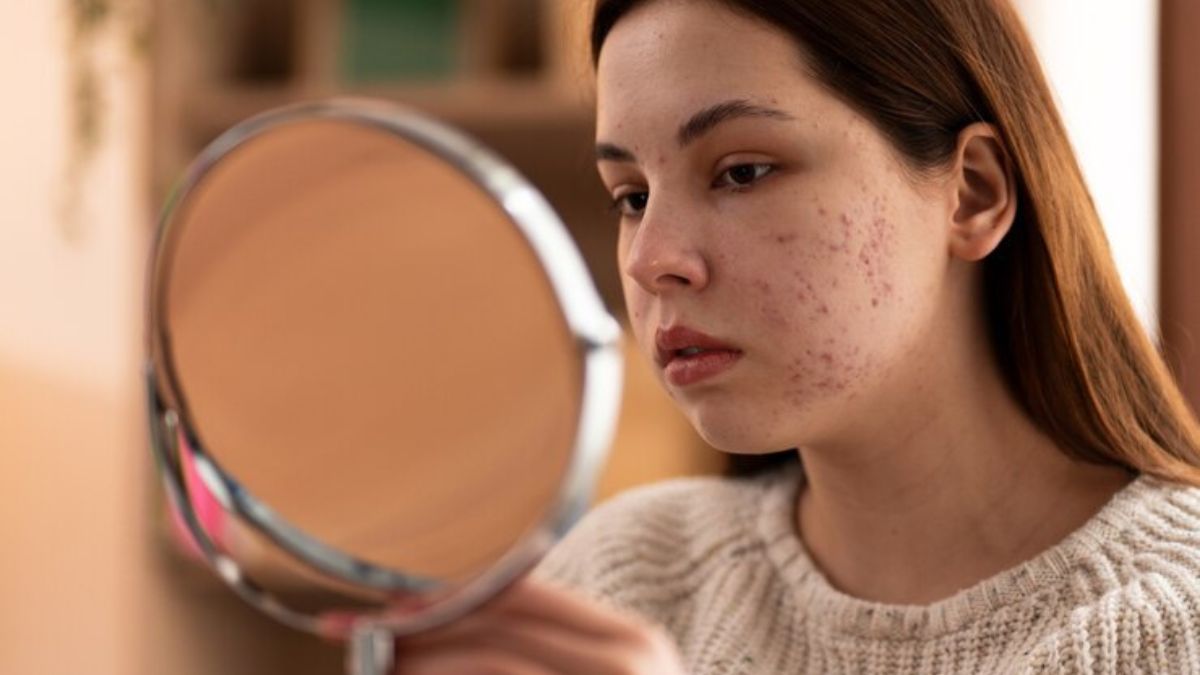
The term “milialar,” which refers to a wide range of milia-related conditions, is a major dermatological concern. Even though milia are frequently thought to be benign, their effects on skin health and appearance cannot be understated. Small keratin-filled cysts called milia are frequently seen on the skin, but comprehending milia requires going deeper into the intricate details of its causes, symptoms, and treatment options.
Types of Milialar
Milialar can take many different forms, and each one has its own diagnostic and therapeutic challenges. Primary milia are those that result from internal variables like hormone fluctuations or heredity. Conversely, secondary milia develops as a result of external factors such as cosmetic procedures or skin damage. Moreover, the distribution of milialar can differ, with the condition primarily affecting the face or broader body regions.
Milialar vs. Milia: Understanding the Difference
Although milia and milialar are interchangeable, it’s important to understand the differences between the two. A wider range of milia-related conditions, such as those that are recurrent, persistent, or resistant to treatment, are included in the term “milialar.” To facilitate targeted management approaches, it is necessary to recognize the underlying factors that contribute to the formation and persistence of milia in order to understand milia.
Causes of Milialar
Malaria has a complex etiology that involves the interaction of genetic, environmental, and lifestyle factors. When skin cell turnover is dysregulated, excessive keratin production happens in milialar, causing keratin to build up in sweat ducts and hair follicles.By impairing the normal function of the skin barrier, skin damage resulting from trauma, sun exposure, or inflammatory conditions can make people more vulnerable to secondary malaria.
Hormonal changes can affect keratinization and sebum production, which can aid in the development of mothers, especially during puberty, pregnancy, and menopause. A major factor is genetic predisposition; milia formation has been linked to specific inherited conditions such as Gardner syndrome and Bazex-Dupré-Christol syndrome. Furthermore, milia can develop as a side effect of drugs like topical retinoids or corticosteroids.
Because cosmetic procedures alter the skin barrier function or cause post-inflammatory changes, there is a risk of secondary milia following laser resurfacing, chemical peels, or dermabrasion. It is imperative to comprehend the various etiological factors that contribute to malaria in order to effectively implement preventive and therapeutic measures.
Risk Factors
An individual’s susceptibility to malaria is influenced by a number of environmental and demographic factors. Primary malaria frequently affects newborns due to transient sebaceous gland activity, and age is a significant determinant. On the other hand, adults are more likely to experience secondary migraines, especially if they have a history of sun exposure or skin trauma.
Skin type is important; people with oily or combination skin are more likely to develop millialar disease because of their higher sebum production and clogged pores. Sun exposure accelerates the aging and keratinization processes of the skin, particularly prolonged or unprotected UV radiation exposure, which predisposes people to the formation of milialar formation.
By changing the structure or function of the skin, medical conditions like dermatological disorders or systemic diseases like pseudoxanthoma elasticum or porphyria cutanea tarda can make milialar disease worse. The identification of these risk factors facilitates the implementation of customized preventive measures and early intervention strategies by healthcare providers.
Prevention Strategies
Malaria prevention requires a comprehensive strategy that includes skincare routines, sun protection gear, and lifestyle changes. Creating a skincare routine that is customized to each person’s skin type is crucial, with a focus on hydration, exfoliation, and mild cleansing to support skin health and avoid pore blockage.
In order to reduce the risk of malaria, sun protection is crucial. It is advised to wear protective clothing and apply broad-spectrum sunscreen every day to prevent sun damage and early aging. A balanced diet, stress management, and quitting smoking are a few more lifestyle choices that can improve skin health and lower the frequency of migraines.
Diagnosis and Evaluation
Clinical evaluation is necessary for an accurate diagnosis of milialar, taking into account the patient’s skin type, medical history, and current symptoms. Small, white, or yellowish papules that are frequently clustered in particular facial areas like the cheeks, eyelids, or forehead are the typical characteristics of milialar lesions. A skin biopsy might occasionally be necessary to confirm the diagnosis and rule out other dermatological issues.
To differentiate milialar from other skin conditions like xanthelasma, syringomas, or epidermoid cysts that present with similar clinical features, differential diagnosis is crucial. Reflectance confocal microscopy and dermoscopy are two diagnostic instruments that can be used to accurately assess milialar lesions and inform treatment decisions.
Treatment Options
A variety of therapeutic modalities are used in the management of milialar, depending on the condition’s severity, location, and underlying causes. Topical therapies that contain benzoyl peroxide, alpha-hydroxy acids, or retinoids can encourage keratolysis and exfoliation, making it easier to remove milialar lesions and preventing their recurrence.
For severe or recurrent cases of milialar disease, doctors may prescribe oral medications such as oral retinoids or antibiotics that target underlying factors like sebaceous gland hyperactivity or bacterial colonization. Cryotherapy, electrodessication, and laser ablation are examples of in-office treatments that are useful for eliminating milialar lesions and enhancing skin texture.
In addition to professional treatments, home remedies like mild scrubs or masks, topical vitamin C or niacinamide serums, and good skincare hygiene can help with the long-term management of milialar acne. To guarantee safety and effectiveness, it is imperative to speak with a dermatologist prior to beginning any at-home treatments.
Management of Recurrent Milialar
A major challenge in clinical practice is dealing with recurrent or persistent malaria, which calls for all-encompassing management approaches to address underlying causes and stop further recurrences. Chemical peels or topical retinoids as maintenance therapy can be used in long-term treatment plans to encourage continuous exfoliation and avoid keratin accumulation.
A dermatologist’s follow-up appointments are crucial for tracking the effectiveness of treatment, making necessary therapy adjustments, and listening to patient concerns. Additionally helpful may be psychological support, especially for those who are experiencing emotional distress or problems with self-esteem that are connected to their mental health condition.
Dermatologist’s Perspective
From the standpoint of a dermatologist, treating malaria calls for a multidisciplinary strategy that includes patient education, clinical expertise, and individualized treatment. Dermatologists can create customized treatment plans based on the various etiological factors that contribute to milialar formation, which are then adapted to the specific needs and preferences of each patient.
Having expert guidance is crucial when navigating the complex medical management process. It gives patients access to advanced procedural techniques, evidence-based treatments, and continuous support throughout their skincare journey. Dermatologists can enable patients to take proactive measures toward obtaining healthier, clearer skin and improving their general quality of life by encouraging open communication and teamwork.
Conclusion
A major challenge in dermatology is the term “milialar,” which refers to a broad range of milia-related conditions. To effectively manage this common skin concern, one must have a thorough understanding of the various etiological factors that contribute to milialar formation, recognize the significance of preventive strategies, and implement targeted treatment approaches.
A comprehensive strategy that includes skincare routines, sun protection gear, and lifestyle adjustments can help people reduce their chance of developing milia and keep their skin clear and healthy. A dermatologist’s expert advice is essential for a precise diagnosis, individualized treatment planning, and continuing medical condition management that will guarantee the best possible results and patient satisfaction.
FAQ’s
Can milialar lesions be painful or itchy?
Although milialar lesions usually don’t cause any symptoms, some people may feel some slight discomfort or itching, especially if the lesions become irritated or inflamed.
Are there any dietary changes that can help prevent milialar formation?
A balanced diet full of vitamins, antioxidants, and essential fatty acids can improve overall skin health and reduce inflammation, which may minimize the risk of milialar development even though diet alone may not have a direct effect on milialar formation.
Can milia occur on areas of the body other than the face?
Though they are most frequently found on the face, milia can occur on other parts of the body as well, such as the neck, chest, or upper arms.
Is it possible for milia to resolve spontaneously without treatment?
It is advised to seek professional advice for persistent, recurrent, or symptomatic lesions to ensure appropriate evaluation and management, even though some cases of milialar may resolve on their own over time.
Are there any emerging treatments or technologies for managing malaria?
Novel therapies and technologies for managing migraines, such as targeted medication therapies, sophisticated laser techniques, and minimally invasive procedures, are being explored by ongoing research and innovation in dermatology. Speaking with a dermatologist can give you information about the most recent developments and available treatments.
Fashion
Fang Jewelry: The Bold Fashion Statement You Need
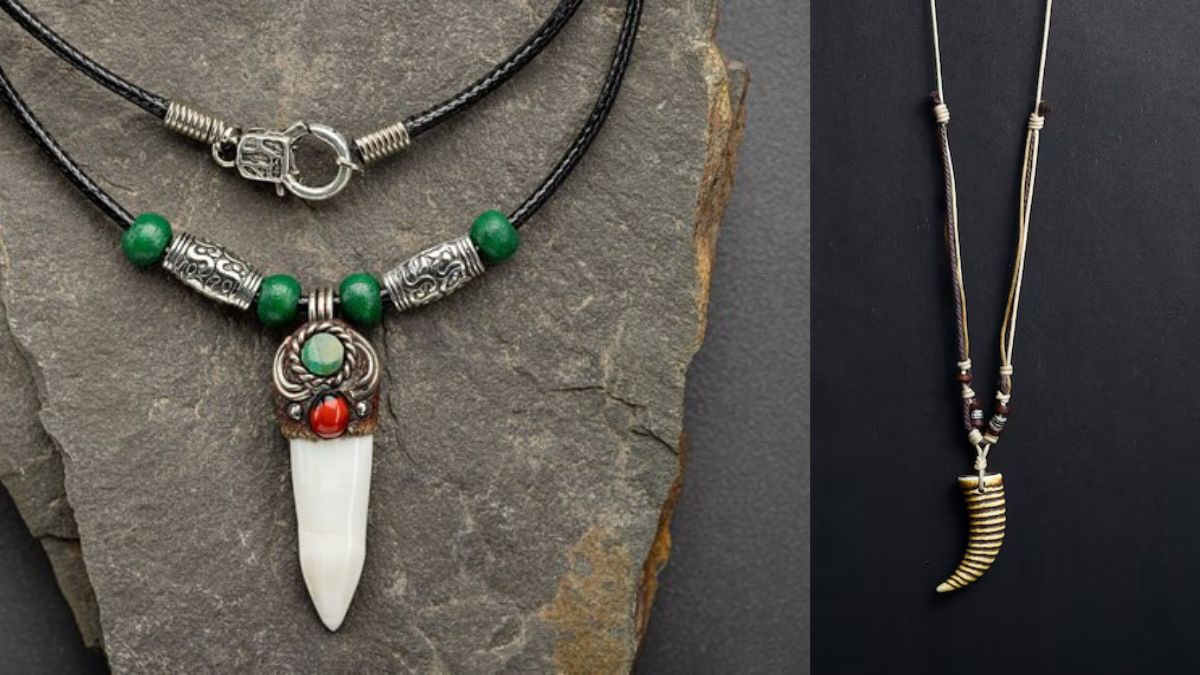
Fang jewelry has taken the fashion world by storm. With its edgy designs and primal appeal, it’s the perfect way to make a statement. But what exactly is fang jewelry, and why has it captured the attention of style enthusiasts everywhere? Let’s dive into the world of this unique accessory trend.
The Rise of Fang Jewelry in Modern Fashion
Fang jewelry has evolved from niche gothic accessories to mainstream must-haves. Celebrities and influencers have embraced this bold trend, pairing fang pieces with everything from casual outfits to high-fashion ensembles.
Types of Fang Jewelry
Fang Necklaces
Fang necklaces are the ultimate statement piece. Crafted from various materials, they range from minimalist designs to elaborate creations adorned with gemstones.
Fang Earrings
From dainty studs to dramatic dangling designs, fang earrings are versatile enough to suit any look.
Fang Rings
Fang rings are bold and eye-catching, often featuring intricate details that mimic real fangs.
Fang Bracelets
These subtle yet edgy accessories can add a unique twist to your wristwear collection.
Materials Commonly Used in Fang Jewelry
- Metals: Gold, silver, and stainless steel offer durability and elegance.
- Organic Materials: Bone and resin create a natural, authentic look.
- Gemstones: Add a touch of sparkle with embedded stones like onyx, ruby, or diamond.
Symbolism Behind Fang Jewelry
Fangs have long symbolized strength, resilience, and primal instincts. Wearing fang jewelry can be a way to channel these powerful traits and connect with nature.
How to Style Fang Jewelry
Casual Outfits
Pair a simple fang necklace with a t-shirt and jeans for an effortlessly cool vibe.
Formal Looks
Elevate your evening attire by adding a gold fang bracelet or a pair of sleek fang earrings.
Themed Events
Fang jewelry is a perfect accessory for Halloween or gothic-inspired parties, completing your look with an edgy flair.
Customizing Your Fang Jewelry
Personalization options make fang jewelry even more special. Consider adding an engraving or working with an artisan to create a custom design that reflects your personality.
Caring for Your Fang Jewelry
Proper care ensures your fang jewelry lasts for years:
- Cleaning: Use a gentle cleanser for metals and soft cloths for gemstones.
- Storage: Keep pieces in a jewelry box or pouch to prevent scratches.
The Ethics of Fang-Jewelry
As demand grows, so does the importance of ethical practices. Many brands now offer cruelty-free options, using synthetic or recycled materials instead of real fangs.
Popular Brands Specializing in Fang-Jewelry
High-End Designers
Luxury brands offer fang pieces crafted with exquisite attention to detail, perfect for those seeking something truly special.
Affordable Options
For those on a budget, many brands provide stylish yet wallet-friendly options without compromising quality.
The Future of Fang-Jewelry
Innovations in design and sustainable materials are driving the evolution of fang-jewelry. With a growing community of enthusiasts, the trend is here to stay
Conclusion
Fang-jewelry is more than just an accessory—it’s a bold statement of strength and individuality. Whether you’re drawn to its symbolism or its edgy aesthetic, there’s no better time to embrace this unique trend.
FAQs
What occasions are suitable for wearing fang-jewelry?
Fang-jewelry is versatile, perfect for casual outings, formal events, or themed parties like Halloween.
How can I tell if fang-jewelry is ethically made?
Look for brands that use recycled materials, cruelty-free practices, and transparent sourcing methods.
Are fang pieces suitable for everyday wear?
Yes! Many fang designs are subtle enough for daily use while still adding an edge to your style.
Can fang-jewelry be unisex?
Absolutely. Fang-jewelry designs often cater to all genders, making them a versatile choice for anyone.
Where can I find high-quality fang-jewelry?
Explore artisan shops, online marketplaces, and ethical brands that specialize in unique and durable pieces.
Fashion
How to Get the Perfect Light Brown Nails Color

Light brown nails have become a timeless classic in the world of nail art. They are neutral yet chic, making them suitable for various occasions—from a casual day out to a more formal event. But how can you achieve that how to get the perfect light brown nails color backstageviral.com? Whether you’re doing your nails at home or visiting a salon, getting the right shade and finish is essential to mastering this elegant look. In this article, we’ll guide you step-by-step on how to get the perfect light brown nails.
What is Light Brown Nail Color?
Light brown nail color is a soft, muted shade that falls between beige and darker brown tones. It’s versatile enough to blend with many styles, whether you’re into minimalism or something a bit more glamorous. Light brown nails can range from creamy latte hues to taupe-like shades, offering plenty of choices for different preferences.
MUST READ: Affordable Fashion in India: A Look at Darden and Beyond
how to get the perfect light brown nails color backstageviral.com?
Choosing light brown nails offers a subtle elegance. It’s the perfect compromise between bolder nail colors and more understated ones like nude or pale pink. Light brown nails work with almost any outfit and occasion, making them an ideal choice for anyone looking for a stylish yet neutral look.
Choosing the Right Shade of Light Brown
The key to getting the perfect how to get the perfect light brown nails color backstageviral.com is matching it with your skin tone. Fair skin pairs well with light, cool-toned browns, while medium to dark skin tones can opt for warmer shades of light brown to create a flattering contrast.
When choosing a how to get the perfect light brown nails color backstageviral.com, consider whether the shade leans toward warm (yellow or peach undertones) or cool (pink or blue undertones). Cooler shades are great for adding a touch of sophistication, while warmer shades provide a cozy, approachable feel.
Tools You Will Need
- Nail file and buffer
- Cuticle pusher and trimmer
- Base coat
- Light brown nail polish
- Top coat
- UV/LED lamp (optional for gel nails)
- Cotton pads and nail polish remover (for clean-up)
Prep Your Nails
Start by removing any old polish with a gentle, acetone-free remover. Use a nail file to shape your nails to your desired length and style—whether that’s round, square, or almond.
Push back your cuticles with a cuticle pusher and trim any excess skin with a cuticle trimmer. Healthy cuticles are essential for a neat and professional-looking manicure.
Applying the Base Coat
Before applying any color, always use a base coat. This helps protect your nails from staining and ensures the polish adheres smoothly. Let the base coat dry completely before moving on to the color application.
How to Pick the Best Light Brown Polish
Not all how to get the perfect light brown nails color backstageviral.com are created equal. Look for a formula that’s long-lasting, streak-free, and provides even coverage. Brands with high-quality ingredients will help ensure your light brown manicure looks flawless for longer.
Top Techniques for Application
When applying the polish, less is more. Opt for thin layers rather than one thick layer. This helps the polish dry faster and reduces the risk of smudging.
Drying Time Between Layers
Always allow each layer to dry fully before applying the next one. This will give your nails a more even and professional finish. How to get the perfect light brown nails color backstageviral.com.
Getting the Perfect Finish
Matte vs. Glossy
Decide whether you want a matte or glossy finish for your how to get the perfect light brown nails color backstageviral.com. Matte adds a modern, chic edge, while glossy nails give off a more classic, sophisticated vibe.
Adding a Top Coat
A top coat is essential to seal in your polish and add shine. It also helps protect your manicure from chips and dings. Apply one to two thin layers of top coat for optimal protection.
To extend the life of your manicure, avoid activities that can cause chips, like opening cans or using your nails as tools. Reapply the top coat every few days to keep your nails looking fresh.
Common Mistakes to Avoid
- Skipping the base coat
- Applying thick layers of polish
- Not allowing the polish to dry between coats
- How to get the perfect light brown nails color backstageviral.com
DIY or Salon: Which Is Better for You?
If you’re confident in your at-home manicure skills, a DIY approach can save time and money. However, if you’re after a long-lasting, professional finish, visiting a salon for a gel or acrylic light brown manicure might be your best bet.
Light Brown Nails for Different Occasions
how to get the perfect light brown nails color backstageviral.com are suitable for any occasion. For a work meeting, opt for a glossy, simple finish. Heading to a wedding? Add a subtle shimmer or rhinestone accent. For casual weekends, a matte light brown nail is effortlessly chic.
Trending Light Brown Nail Designs
- Ombre Light Brown: Blending light brown with a nude or white gradient.
- Geometric Patterns: Add delicate lines or shapes in black or white for a modern touch.
- Marble Effect: Create a marble texture using a mix of light brown and white polish.
Conclusion
Getting the how to get the perfect light brown nails color backstageviral.com is all about selecting the right shade, preparing your nails properly, and using good application techniques. Whether you’re going for a glossy finish or experimenting with matte textures, light brown nails are a versatile and stylish choice. With the right tools and a bit of practice, you’ll be rocking a flawless light brown manicure in no time!
FAQs
1. How can I make my how to get the perfect light brown nails color backstageviral.com last longer?
To extend the life of your manicure, apply a top coat every few days, and avoid exposing your nails to harsh conditions like excessive water or cleaning chemicals.
2. What is the best nail shape for light brown nails?
Light brown nails look great on any shape, but almond and square shapes tend to complement the neutral tone particularly well.
3. Can I achieve a salon-like finish at home?
Yes! With the right tools, patience, and practice, you can achieve a professional-looking manicure at home.
4. Is matte or glossy better for light brown nails?
It depends on your personal preference. Matte offers a modern, understated look, while glossy finishes are timeless and chic.
5. What skin tones suit how to get the perfect light brown nails color backstageviral.com best?
Light brown nails complement all skin tones, but it’s best to match the undertone of the polish with the undertone of your skin for a harmonious look.
Fashion
The Vibrant World of African fashion dresses

African fashion dresses attire are a beautiful representation of the continent’s rich lifestyle, historical past, and artistry. Each piece tells a story, reflecting the traditions and history of the those who wear them. In this newsletter, we’ll discover the numerous patterns, fabrics, and cultural importance at the back of African attire, whilst also celebrating their splendor and flexibility.
African fashion dresses clothes are extra than just garb; they may be a canvas of expression that showcases the artistry and variety of African cultures. From colourful styles to difficult designs, these dresses seize the spirit and creativity of the continent.
A Rich History
Historically, conventional African attire was made from herbal substances, such as cotton and animal hides. Each place had its particular patterns and designs that conveyed social reputation, marital reputation, and tribal identity.
Modern Influences
In recent years, African fashion has gained worldwide reputation, blending traditional factors with present day tendencies. Designers are now creating present day pieces that enchantment to worldwide audiences whilst retaining cultural significance.
Key Fabrics Used in African fashion dresses
Ankara cloth, known for its vibrant colorations and bold styles, is a staple in African style. Originating from West Africa, Ankara is now worn globally, making it a symbol of African identity.
Kente material, with its elaborate designs and brilliant colors, comes from Ghana. Traditionally worn via royalty, it represents wealth and cultural pride. Each pattern tells a tale, making Kente a deeply significant material.
Batik
Batik, a way of dyeing fabric, is usual in various African nations. It functions stunning patterns created via a wax-withstand technique. Batik isn’t always simplest a fashion announcement however additionally an art shape that reflects the creativity of African artisans.
Popular Styles of African Dresses
Kaftans
Kaftans are free-becoming garments often worn with the aid of both ladies and men. They are comfortable, stylish, and best for any occasion, whether or not informal or formal.
Dashikis
Dashikis are colourful tunics which are normally worn with the aid of men. They are frequently paired with matching pants and are a symbol of pleasure in African background.
Boubous
The boubou is a traditional West African garment that functions wide sleeves and a flowing silhouette. It is worn for both informal and formal activities and is known for its beauty and comfort.
Cultural Significance
Many African fashion dresses attire feature styles that keep specific meanings. For example, positive designs might also represent energy, fertility, or social fame. Understanding those meanings adds depth to the appreciation of African style.
African attire play a important position in celebrations and rituals. Weddings, spiritual ceremonies, and cultural gala’s regularly show off vibrant attire that honors traditions and brings communities collectively.
The Global Influence of African Fashion
The affect of African style has reached runways around the world. Designers like Stella McCartney and Yves Saint Laurent have incorporated African-inspired designs into their collections, highlighting the splendor and flexibility of these garments.
How to Wear African Dresses
Wearing African dresses can be a amusing manner to specific your style. Mix and match prints, pair them with neutral accessories, and don’t be afraid to experiment with layers.
Accessorizing is fundamental to finishing the appearance. Consider adding announcement earrings, a elegant handbag, or maybe traditional headwraps to enhance your outfit.
Sustainable Fashion in African Dressmaking
Sustainability is becoming an increasing number of vital in fashion, and plenty of African designers are main the manner. By the usage of domestically sourced substances and conventional craftsmanship, they invent beautiful garments that respect each culture and the surroundings.
Where to Buy Authentic African fashion dresses
Finding proper African clothes may be an thrilling adventure. Look for local boutiques that specialize in African fashion, or explore on line systems that join you with artisans immediately. Support honest trade practices to make sure your purchases advantage the creators.
Conclusion
African fashion dresses attire are a lovely testomony to the continent’s rich history and creativity. Whether worn for special occasions or regular lifestyles, those clothes bring stories and meanings that transcend borders. By embracing African fashion, we no longer handiest rejoice its beauty however additionally honor the cultures that encourage it.
FAQs
- What are the maximum common fabrics utilized in African fashion dresses?
Ankara, Kente, and Batik are a number of the most popular fabrics, each with specific patterns and significance. - Are African dresses appropriate for everyday put on?
Absolutely! Many patterns, like kaftans and dashikis, are designed for consolation and may be worn casually or for unique activities. - How can I take care of my African fashion dresses?
Always test the care label, but maximum may be hand-washed or system-washed on a gentle cycle. Avoid harsh detergents to keep the colors. - Where can I examine extra about the cultural significance of African fashion?
Books, documentaries, and cultural exhibitions are remarkable sources. Engaging with nearby communities can also offer insights.
How can I help African fashion dresses designers?
Purchase at once from designers, attend style indicates, and unfold the phrase about their paintings to assist promote their artistry.
MUST VISIT: CLICK HERE
-
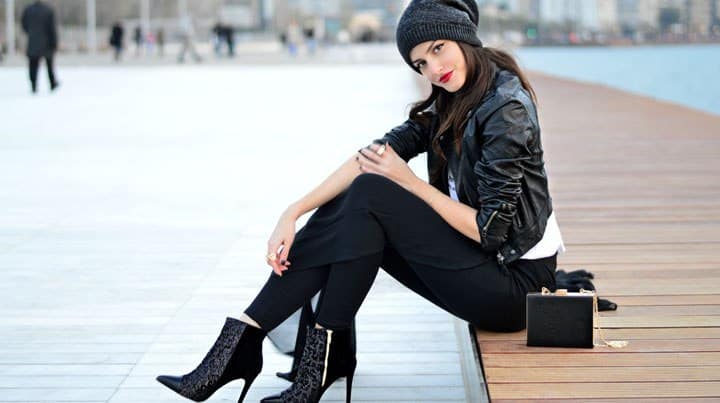
 Fashion10 months ago
Fashion10 months agoEva_Fashionista: Redefining Style and Elegance in the Modern World
-

 Guide12 months ago
Guide12 months ago2131953663: Decoding the Mystery Behind the Numbers
-

 Crypto11 months ago
Crypto11 months agoCrypticStreet.com Guides: Navigating the Path to Cryptocurrency Mastery
-
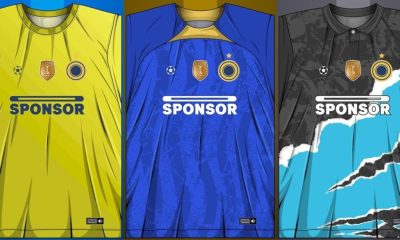
 Sports Shirt12 months ago
Sports Shirt12 months agoÁo Bóng Đá Thiết Kế: Personalized Soccer Jerseys for the Discerning Fan
-

 Tech12 months ago
Tech12 months agoEmpowering Cybersecurity: The Evolution of Zero Trust Network Principles
-

 Digital Marketing11 months ago
Digital Marketing11 months agoimgsrc: Your Ultimate Guide to Image Hosting and Sharing
-

 Entertainment11 months ago
Entertainment11 months agoКинoкрадко: An Innovative and Exciting Cinematic Experience
-

 Crypto10 months ago
Crypto10 months ago“tex9.net Crypto: Unveiling the Latest Trends and Insights in the Cryptocurrency World”

